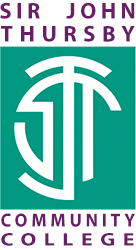Year 8 Design & Technology
| Food and nutrition | |||
| Topic | Healthy Eating | ||
| No of lessons | 12 | ||
| When is it happening | Year 8 | ||
| What will students learn |
Students will learn a range of practical and theory skills to enable them to cook a range of healthy and nutritious meals, these include: Knife Skills Weighing and measuring Ability to use the grill Ability to use the cooker with guidance Preparation of ingredients (peel, wash, grate and dry where appropriate) Hygiene, health and safety in a working kitchen Understanding of components of a balanced diet |
||
| Key Knowledge that students should know at the end of 'Topic' | This is the knowledge that students will meet for the first time in this topic |
Students will demonstrate some understanding of the technical aspects in the kitchen, including understanding of nutrition and health and safety. They will understand how products are produced and sold such as fair trade. Students will gain knowledge in sensory analysis around food and how this affects taste, flavour, texture and smell of food. Students will gain understanding of what makes a balanced diet. Students will understand the 4 C’s (cooking, cleaning, chilling and cross-contamination) and how they prevent illness. Students will gain the knowledge of where food is sourced and the importance of direct market connections between farmers and consumers like those found in farmers' markets. |
|
| This is knowledge that students may have met before but will need to deepen their understanding | Students may show some understanding of the Healthy Eating plate and the range of foods needed to stay healthy. Students may have developed some understanding of vitamins and minerals. Students may know about Fair trade. | ||
| Key Skills that students should be able to demonstrate at the end of 'Topic' | This is the skills that students will meet for the first time in this topic |
Select from and use a wider range of ingredients, taking into account their properties and their intended use. Ability to follow a recipe and alter it to meet the needs of the interned user. Ability to demonstrate awareness of health and safety at all times, cook meals without cross contamination occurring. |
|
| This is skills that students may have met before but will need to develop |
Know how to use utensils and some electrical equipment. They will be able to present their products using a variety of skills to a good standard. Students will be able to independently use the bridge hold, the claw grip, peel, slice, dice, and cutting to even sizes. Students will be able to independently use the cooker. They will be able to prepare, combine and shape (roll, wrap, mix, coat, layer ingredients, whilst demonstrating the technical skill or preventing cross contamination and handling high risk foods correctly). |
||
| Key vocabulary that students should know and understand | Cross contamination, bridge, claw, enrobe, fair trade, vitamins, minerals, nutrients. Analysis, Sensory | ||
| The Big Question | What do I know about food hygiene? | ||
|
Key questions that students should be able to answer at the end of the 'Topic'
|
What is Healthy Eating ? What is a balanced diet ? | ||
| Remember the 4 C’s? How do they relate to HACCP? | |||
| Does it matter where my ingredients come from? How is your food farmed? | |||
| Why should we choose seasonal food? | |||
| Do we ‘eat with our eyes?’ | |||
| Do we all have the same energy needs? | |||
| What is nutritional analysis? | |||
| Why do we use different chopping boards? | |||
| How do we store food safely ? | |||
| How do we check food is cooked properly ? | |||
| What does cross-contamination mean ? |
|||
| What does Fair trade mean and how does it affect the food industry ? |
|||
| What are Food miles ? |
|||
| How do I cater for special diets or allergies ? |
|||
| How do I evaluate my food practicals? |
|||
| What does sensory analysis mean ? |
|||
